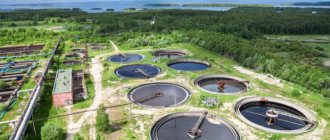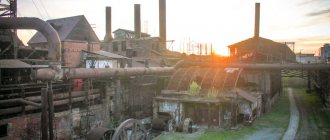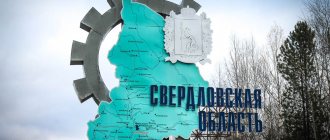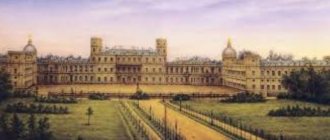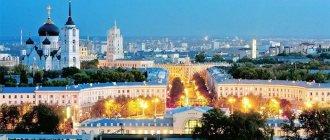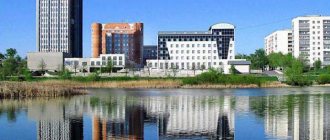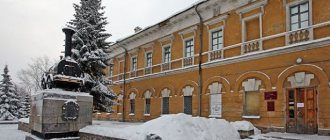Geographical characteristics
The city of Nizhny Tagil is located almost on the very border separating Europe from Asia. The point of intersection of two continents is only about 20 kilometers away. And to the heart of the Urals - Yekaterinburg - 150 km. Belongs to the Sverdlovsk region. The Nizhny Tagil index is light and memorable. It starts with 622 and then the post office code is added to it.
The city is located in a mountainous area - on the middle section of the eastern slope of the Ural ridge. Its area is just over 297 square kilometers. In the urban area there are three mountains that smoothly turn into the plains of the West Siberian Lowland in the east.
Nizhny Tagil is not deprived of water resources. Fourteen rivers flow through it! The largest of them is called Tagil.
Near the city there are the largest deposits of ores - iron and magnetite. Pyrite, limestone and some other minerals are also mined here.
The climate in these places is harsh - Siberian or, in scientific terms, sharply continental. A cold winter, lasting six months, and a short, cool summer (what can be called heat lasts at most two or three weeks). It rains almost constantly. The weather in Nizhny Tagil in spring is unusual - within one day the thermometer can “jump” twenty degrees up or down. And the average annual temperature does not exceed 1.7 degrees.
Story
At the end of the 16th century, Ermak Timofeevich arranged a camp for his troops in the vicinity of the city, near Mount Bear-Stone, thereby crossing the European-Asian divide.
In 1696, in the area of Mount Vysokaya, and in 1702, along the banks of the Vyya River, copper ore was found by the boyar’s son Mikhail Bibikov. The year 1696 is considered the beginning of the city's history. In 1714, the then owner of the Ural factories, Akinfiy Demidov, was informed about the mines; soon after, by decree of Tsar Peter I, he founded the Tagil and Vyisky ironworks and the production of cast iron, iron and copper began in the Urals. Ore was taken from the Vysokogorsky, Lebyazhinsky and Ivanovsky iron mines. In 1737, copper ore was discovered along the banks of the Lebyazhka River.
October 8 (19), 1722 is considered the date of foundation of Nizhny Tagil, when the first product - cast iron - was produced at the Vyysky plant. Founded by the Demidov dynasty, which before the revolution owned the Tagil factories: “Verkhne-Vyisky” and “Tagilsky”. At this time, the products of Tagil iron and copper smelting plants, known under the trademark “Old Sable,” became world famous. The legend about the use of Tagil copper in the creation of the Statue of Liberty has not yet found documentary evidence.
Nizhny Tagil is also widely known in Russia for its folk craft of Tagil painting of tin trays. In 1833, in Nizhny Tagil, serf inventors father and son Cherepanovs (Efim Alekseevich and Miron Efimovich) built the first steam locomotives in Russia. According to legend, in 1800, serf mechanic Efim Artamonov made the world's first bicycle with pedals and steering.
In 1918, major battles took place in Nizhny Tagil during the Civil War. They were very fierce and lasted from September 9 to October 22, 1918. 10 thousand Red Army soldiers and six thousand White Guards took part, on whose side were also the Czechoslovaks. It has been established that in total about 400 Czechoslovak legionnaires died in the battles for Nizhny Tagil. In November 2009, a monument to the Czechoslovak legionnaires who fell there was opened in Nizhny Tagil. There are 67 names of soldiers on the monument that were identified.
Nizhny Tagil received city status on August 20, 1919 by decree of the Yekaterinburg Military Revolutionary Committee:
| The Nizhny Tagil plant will be transformed into the city of Nizhny Tagil, without a district, with the introduction of municipal utilities <…> The city of Nizhny Tagil merges into one whole from the Tagil, Vyysko-Nikolsk, and Troitsko-Alexandrovskaya volosts. |
In 1926, five clubs and eight libraries operated in the city, and the first radio center appeared. In 1930, 42 thousand people lived in the city, its housing stock barely exceeded 220 thousand m², 94 percent of the houses were wooden, 85 percent were one-story. The city had 19 primary schools, two technical schools, a workers' school, two cinemas, two hospitals with a total number of beds of 126. There was no running water or sewerage.
In 1932, construction of the first workshops of the Ural Carriage Plant began. Four years later, in October 1936, the first freight car rolled off its assembly line. In 1937, the first tram was launched in Nizhny Tagil. In 1939, a teacher's institute was opened - the city's first higher education institution.
During the Great Patriotic War, the majority of all T-34 tanks produced were produced at Uralvagonzavod, where eleven enterprises in the western part of the USSR were evacuated.
At the end of the 1930s. The All-Union Association "Steel" ordered Gipromez to begin designing the Novo-Tagil Metallurgical Plant. On September 1, 1930, a decree of the Council of People's Commissars of the USSR was issued, obliging the Supreme Agricultural Sciences and the State Planning Committee of the USSR to begin construction of NTMZ. On March 17, 1931, on Fedorina Gora, near the Vyazovka River, the first barracks appeared at the construction site, where the construction headquarters was located. In 1932, the plant construction department was already located in three barracks. By 1935, a water supply workshop was built at the NTMZ plant, and construction of a thermal power plant and open-hearth and bandage shops began. In 1936, the first open-hearth furnace was laid. In January 1938, a motor transport shop began operating, and in April of the same year, a network and substations shop opened, and in May, a mechanical and shaped foundry shop. On April 25, 1940, the plant's thermal power plant produced its first current, and on June 17, the coke-chemical workshop began operating; On June 25 of the same year, the first blast furnace produced the first cast iron, and on September 23, the second open-hearth shop was opened; On December 11, the second blast furnace was launched. In the same year, the VZhR processing plant was built at the Vysokogorsky mine; iron ore production in 1940 was 744,000 tons. In 1941, the third blast furnace was launched at NTMZ, and at the Refractory Plant, the technology of steel-casting supplies was mastered for the first time in the Urals. During the Great Patriotic War, ferrochrome production was mastered at the old Demidov Metallurgical Plant (named after Kuibyshev). The NTMZ rolling shop began production of armor plates for the needs of the front, and ferrosilicon was launched in the blast furnace shop. In February 1942, the production of shells for front-line Katyushas was mastered. On April 25 of the same year, the fourth blast furnace was launched at NTMZ. In 1943, the boiler-assembly shop began work, the fifth and sixth blast furnaces were launched; the third coke battery and tar distillation shop began operating at the coke-chemical production, and at VZhR a magnetic enrichment factory and a Hoffmann furnace (at OGZ) began operating. In 1944, an iron foundry, a forging shop and an instrumentation shop were built at NTMZ, and new batteries were launched at Koksokhim. In 1945, blast furnace repair and steam power shops were launched.
During the years of the Great Patriotic War, 4,278,000 tons of steel were smelted at the New and Old metallurgical plants of Nizhny Tagil, and 532,000 tons of rolled metal were produced. During the war years, NTMZ produced about 30% of all armored steel in the USSR. More than 13 million tons of raw ore were mined at VZhR; About 8 million tons of marketable ore were produced.
The importance of Nizhny Tagil is also evidenced by the fact that it was included in the number of 20 cities of the USSR subject to atomic bombing, according to the first post-war plan for the war against the USSR (Plan “Totality”), developed in the USA already in 1945, and was also included in subsequent similar plans.
On February 1, 1963, the Council of Workers' Deputies of the city of Nizhny Tagil was transferred to the subordination of the Sverdlovsk Regional Council of Workers' Deputies.
Coat of arms (1995—2005)
On February 1, 1971, Nizhny Tagil was awarded the Order of the Red Banner of Labor “for the successes achieved by workers in fulfilling the tasks of the five-year plan for the development of industrial production, especially the ferrous metallurgy and mechanical engineering industries.”
Since the early 1990s. The main battle tank T-90 (manufactured by Uralvagonzavod) is produced in the city.
History of Nizhny Tagil
Nizhny Tagil officially keeps its chronicle since 1722, although “life began” on its territory much earlier. For example, it is known that at the end of the sixteenth century Ermak stood here with his army.
More than a century later, a tidbit of Ural territory was given by Peter the Great to the oligarchs by today's standards - the Demidov family, who built an “iron-making” plant on land rich in minerals. With this step, the sovereign pursued the goal of strengthening Russia in military-technical terms.
The first smelting of iron dates back to October 8, 1722. It is this day that historians consider the beginning of the existence of Nizhny Tagil.
The Vyysky copper smelter was the largest in the Russian Empire. But the village around it remained small, quiet, and unprepossessing for a long time. Apart from the uprising of Pugachev and Yulaev, as well as the hot “red-white” battles during the civil war, this area is practically unremarkable in historical terms.
After the revolution, the settlement began to develop more actively. The construction of new plants and factories required the expansion of infrastructure, and in 1931 Nizhny Tagil was given the status of a city.
During the Second World War, like all of Russia, Nizhny Tagil made every effort to defeat the enemy. The Ural industrial center became a haven for Soviet metallurgy. The legendary T-72 tank was produced here.
By the end of the eighties, the city had grown greatly, increasing by as much as 70% in just 50 years.
City `s history
At the end of the 16th century, Ermak Timofeevich arranged a camp for his troops in the vicinity of the city, near Mount Bear-Stone, thereby crossing the European-Asian divide.
Magnetic mountain in the yasash estates up the Tagil volost down the Tagil river on the left side: the mountain is 300 sazhens long on top, 30 sazhens across, 70 sazhens high, the same in the other direction, and in the middle of the mountain is the umbilical cord of a pure magnet...... I saw a good place for a plant on the rivers Tagil and Vyya Siberian boyar son Mikhail Bibikov. That same summer, the inspection was carried out by seven blacksmiths and ore smelters with Leonty Novoselov. Along the banks of the rivers there are dark forests and forests and stone mountains and the circle of the mountain is large... the forest has plenty of good things for the dam builder...
Report of the Verkhoturye governor D. P. Protasyev to Tsar Peter the Great, 1696
In 1696, in the area of Mount Vysokaya, and in 1702, along the banks of the Vyya River, copper ore was found by the boyar's son Mikhail Bibikov. The year 1696 is considered the beginning of the city's history. In 1714, the then owner of the Ural factories, Akinfiy Demidov, was informed about the mines; soon after, by decree of Tsar Peter I, he founded the Tagil and Vyisky ironworks and the production of cast iron, iron and copper began in the Urals. Ore was taken from the Vysokogorsky, Lebyazhinsky and Ivanovsky iron mines. In 1737, copper ore was discovered along the banks of the Lebyazhka River.
October 8 (19), 1722 is considered the date of foundation of Nizhny Tagil, when the first product - cast iron - was produced at the Vyysky plant. Founded by the Demidov dynasty, which before the revolution belonged to Tagil and Tagil. At this time, the products of Tagil iron and copper smelting plants, known under the trademark “Old Sable,” became world famous. Tagil metal was used in the construction of the Statue of Liberty in New York. Sheet copper from the Verkhne-Vyysky plant, which by that time had received awards from the World Technical Exhibitions in Birmingham and Paris (Grand Prix and Gold Medal), was purchased by the creator of the statue, sculptor F. Bartholdi, who used it to make the outer shell of the statue). Also, the city of N. Tagil is widely known in Russia for its folk craft of Tagil painting of tin trays. In 1833, in Nizhny Tagil, serf inventors father and son Cherepanovs (Efim Alekseevich and Miron Efimovich) built the first steam locomotives in Russia. In 1800, serf mechanic Efim Artamonov made the world's first bicycle with pedals and steering.
In 1918, major battles took place in Nizhny Tagil during the Civil War. They were very fierce and lasted from September 9 to October 22, 1918. 10 thousand Red Army soldiers and six thousand White Guards took part, on whose side were also the Czechoslovaks. It has been established that in total about 400 Czechoslovak legionnaires died in the battles for Nizhny Tagil. In November 2009, a monument to the Czechoslovak legionnaires who fell there was opened in Nizhny Tagil. There are 67 names of soldiers on the monument that were identified.
During the Great Patriotic War, the majority of all T-34 tanks produced were produced at Uralvagonzavod, where eleven enterprises in the western part of the USSR were evacuated.
Nizhny Tagil received city status on August 20, 1919 by decree of the Yekaterinburg Military Revolutionary Committee:
The Nizhny Tagil plant will be transformed into the city of Nizhny Tagil, without a district, with the introduction of municipal utilities in it <…>The city of Nizhny Tagil merges into one whole from the Tagil, Vyysko-Nikolsk, Troitsko-Alexandrovskaya volosts.
In 1926, five clubs and eight libraries operated in the city, and the first radio center appeared. In 1930, 42 thousand people lived in the city, its housing stock barely exceeded 220 thousand m², 94 percent of the houses were wooden, 85 percent were one-story. The city had 19 primary schools, two technical schools, a workers' school, two cinemas, two hospitals with a total number of beds of 126. There was no running water or sewerage.
In 1932, construction of the first workshops of the Ural Carriage Plant began. Four years later, in October 1936, the first freight car rolled off its assembly line. In 1937, the first tram was launched in Nizhny Tagil. In 1939, a teacher's institute was opened - the city's first higher education institution.
At the end of the 1930s. The All-Union Association "Steel" ordered Gipromez to begin designing the Novo-Tagil Metallurgical Plant. On September 1, 1930, a decree of the Council of People's Commissars of the USSR was issued, obliging the Supreme Agricultural Sciences and the State Planning Committee of the USSR to begin construction of NTMZ. On March 17, 1931, on Fedorina Gora, near the Vyazovka River, the first barracks appeared at the construction site, where the construction headquarters was located. In 1932, the plant construction department was already located in three barracks. By 1935, a water supply workshop was built, and construction of a thermal power plant and an open-hearth and bandage workshop began. In 1936, the first open-hearth furnace was laid. In January 1938, a motor transport shop began operating, and in April of the same year, a network and substations shop opened, and in May, a mechanical and shaped foundry shop. On April 25, 1940, the plant's thermal power plant produced its first current, and on June 17, the coke-chemical workshop began operating; On June 25 of the same year, the first blast furnace produced the first cast iron, and on September 23, the second open-hearth shop was opened; On December 11, the second blast furnace was launched. In the same year, the VZhR concentrating plant was built at the Vysokogorsky mine; iron ore production in 1940 amounted to 744,000 tons. In 1941, the third blast furnace was launched at NTMZ, and at the Refractory Plant, for the first time in the Urals, the technology of steel-casting supplies was mastered. During the Great Patriotic War, ferrochrome production was mastered at the old Demidov Metallurgical Plant (named after Kuibyshev). The NTMZ rolling shop began production of armor plates for the needs of the front, and ferrosilicon was launched in the blast furnace shop. In February 1942, the production of shells for front-line Katyushas was mastered. On April 25 of the same year, the fourth blast furnace was launched at NTMZ. In 1943, the boiler-assembly shop began work, the fifth and sixth blast furnaces were launched; the third coke battery and tar distillation shop began operating at the coke-chemical production, and at VZhR a magnetic enrichment factory and a Hoffmann furnace (at OGZ) began operating. In 1944, an iron foundry, a forging shop and an instrumentation shop were built at NTMZ, and new batteries were launched at Koksokhim. In 1945, blast furnace repair and steam power shops were launched.
During the years of the Great Patriotic War, 4,278,000 tons of steel were smelted at the New and Old metallurgical plants of Nizhny Tagil, and 532,000 tons of rolled metal were produced. During the war years, NTMZ produced about 30% of all armored steel in the USSR. More than 13 million tons of raw ore were mined at VZhR; About 8 million tons of marketable ore were produced.
Coat of arms (1995—2005)
On February 1, 1971, Nizhny Tagil was awarded the Order of the Red Banner of Labor “for the successes achieved by workers in fulfilling the tasks of the five-year plan for the development of industrial production, especially the ferrous metallurgy and mechanical engineering industries.”
Since the early 1990s. The main battle tank T-90 (manufactured by Uralvagonzavod) is produced in the city.
Population
One of the most important characteristics of any city is its population. Nizhny Tagil is home to 356,744 people (2015 data). Over the past few decades, the demographic picture here has been depressing - mortality exceeded birth rates, people were leaving. If we remember that back in 1988 the population of Nizhny Tagil was 425 thousand, it turns out that the city has lost almost 70 thousand people in forty years.
Today the situation has stabilized somewhat - at least, this is what local authorities say. The growth of the birth rate is facilitated by the practice of allocating maternity capital, and mortality is reduced by improving the environmental situation and improving the quality of medical services.
What do the people do here? Nizhny Tagil, as you know, is a city of large industrial enterprises. Therefore, the bulk of Tagil residents are workers. The city is home to a lot of pensioners (a hazardous industry requires early retirement), as well as disabled people, children who have lost their breadwinner, and representatives of other socially vulnerable categories of citizens. But there are few entrepreneurs in Nizhny Tagil. People are afraid to be left alone with economic instability and confusing legislation, so they prefer to stick to state-owned or large private enterprises.
Culture
The main symbol of the city is Fox Mountain - a small mountain with a watchtower on top, located near the Tagil pond. The tower on Fox Mountain is an architectural monument and an object of cultural heritage of Russia.
The inventors of the first Russian steam locomotive, father and son Cherepanovs, the serf inventor of the world's first bicycle E.M. Artamonov, the writer A.P. Bondin and the Ural artists of the 18th century were born in Nizhny Tagil. Khudoyarov, in the vicinity of N. Tagil, in the village of Visim, lived the great Russian writer D. N. Mamin-Sibiryak. In addition, the famous Ural writer P. P. Bazhov lived and worked in Nizhny Tagil for a long time. It is believed that it was here that he wrote his most famous works - “The Silver Hoof” and “The Mistress of the Copper Mountain”.
The Nizhny Tagil Museum of History and Local Lore, as well as the Cherepanov House museum and the Museum of Life and Crafts (Demidov House) store exhibits from the era of the origin and development of industry in the Urals, the first Tagil metallurgical plants (Tagil and Vyisky) and personal belongings of residents of the Urals of past eras. The plant-museum of the history of mining equipment has open-air exhibitions highlighting the main stages of metallurgical production; The museum was formed on the territory of a metallurgical plant founded in the 18th century by the Demidov dynasty, which operated until 1987.
The Museum of Fine Arts of Nizhny Tagil contains the largest collection of paintings by Khudoyarov, and the museum also owns a small collection of engravings by the famous German Renaissance painter Albrecht Dürer, and in addition one of the most famous paintings in the world - “The Holy Family” (“Madonna de Popolo”; “Madonna with a Veil”; “Tagil Madonna”) by the great Italian artist Raphael Santi.
Nizhny Tagil is the birthplace of Russian lacquer tray painting and the tradition of painted trays in Russian culture. In N. Tagil, the unique Russian folk craft Tagil tray painting has been preserved. Together with Zhostovo, with Zhostovo tray painting, Nizhny Tagil is one of the two remaining centers of lacquer tray painting in Russia that have survived and survived to this day. The Nizhny Tagil Museum of Tray Crafts houses collections of painted Tagil trays from the time of the origin of the craft to the present day. Tagil trays can also be seen in the Nizhny Tagil Museum of History and Local Lore and the Nizhny Tagil Museum of Fine Arts.
There are quite a lot of urban sculptures in Nizhny Tagil, especially in the City Center, most of which were created by the hand of Tagil sculptor Alexander Ivanov. His works are dominated by themes of animals and angels. Most of the city's sculptures are welded. In addition to the classics, in N. Tagil there are informal youth clubs: the anime club "TAnK", the rock club "Corsair" and the bike club "Skif".
In the city of Nizhny Tagil there are four theaters, a cultural center, a circus, and it has its own philharmonic society with jazz, folk and symphony orchestras. In addition, there are five cinemas. Also in Nizhny Tagil there is its own film studio “Through the Looking Glass”, designed for shooting low-budget films.
The districts of Nizhny Tagil are not alike
Tagilstroevsky is the largest, most densely populated and “scattered”. On its territory there are both industrial zones and the largest residential areas.
Dzerzhinsky is very isolated. Locals even call it a “satellite city.” It is inhabited by 120 thousand people, most of whom work at the Ural Carriage Plant and have virtually no “communication” with other parts of Tagil.
The suburban area is just being formed as a single whole, but for now it is characterized by some fragmentation.
Well, Leninsky is the center. Nizhny Tagil here pleases with low-rise buildings built before the war and even houses preserved from the 19th century. The houses built by captured Germans please the eye of an architecture connoisseur - they are decorated with stucco, columns, decorative balconies, etc. Although there are many banal “Khrushchev” buildings in the Leninsky district. This is where the most expensive real estate in the city is. The cost of one square meter in an old building with a good view from the window can reach seventy thousand rubles.
NIZHNY TAGIL
NIZHNY TAGIL, a city in Russia, in the west. parts of the Sverdlovsk region. Us. 358.9 thousand people (2012; the second most populous city in the region after Yekaterinburg). Located on the east. slope Wed. Ural, on the river Tagil and along the banks of the Nizhny Tagil pond. Junction of railways and roads.
Nizhny Tagil. Panorama of the city. Photo by I. A. Malakhovsky
The emergence of NT is associated with the discovery in 1696 and development of iron ore deposits near Mount Magnit (now Vysokaya). Prom. Tsar Peter I entrusted the development of this territory to N.D. Demidov (Antyufeev). The founding date of N.T. is traditionally considered to be 1722 - the time of the emergence of the first settlement near Mount Magnit and the launch of the Vyisky blast furnace, hammer and copper smelting plant. Actually, the Nizhny Tagil blast furnace, processing and copper smelting plant, which had the largest blast furnace in Europe at that time, was launched in 1725 by A. N. Demidov. Until 1917 it belonged to A.N. Demidov and his descendants, in 1917–1918 - JSC Nizhny Tagil and Lunievsky Mining Plants of the heirs of P.P. Demidov, Prince of San Donato.
Almost from the moment the village was founded. The Nizhny Tagil Plant became a major center of the Ural-Siberian Old Believers. Maintaining close ties with Ch. centers of Old Belief in Europe. Russia (the Vygo-Leksinsky hostel and the Kerzhensky Old Believers monasteries), the Tagil Old Believers played. role in organizing a unified system of secret monasteries and hermitages in the Urals. Nizhny Tagil Old Believers made a significant contribution to the formation of the so-called. factory direction of the original Old Believers. historical writing. Since 1765, the first school in private factories in the Urals operated here, in which the children of clerks and factory employees studied. The Old Believers occupied it. some of the positions of clerks.
K ser. 18th century village The Nizhny Tagil Plant turned into a settlement with developed industries and small-scale wholesale trade. In the beginning. 1760s The artisan working people of the village joined the mass unrest of the assigned peasants, protesting against the owners’ attempts to limit their entrepreneurial activities. In the end 1770s – 1790s Together with the Nevyansk people, part of the Nizhny Tagil artisans from among the possessions waged a long struggle against their transfer to the position of serfs. At the same time, during the Pugachev uprising of 1773–75, the residents of the village remained loyal to the authorities and actively participated in the battles with the Pugachevites in the defense of the Yugovsky factories and Yekaterinburg (the battle for the Utkinsky factory in February 1774).
Nizhny Tagil. Monument to N. N. Demidov. 1836 (remelted in 1924). Sculptor F. J. Bosio. Architects A. Z. Komarov, K. A. Lutsenko, O. Montferrand, E. I. Dimert. Colored postcard. 1910s
From ser. 18th century the village was a major cultural center of the Urals and the West. Siberia. One of the leading centers for the production of varnishes. painted metal trays (the most famous masters of lacquer painting are the Khudoyarovs), copper utensils, art. cast iron casting (among the Nizhny Tagil products are 4 cast iron bridges in St. Petersburg: Potseluev; Semenovsky; Krasny; on the Obvodny Canal, near the Moskva Zastava); Icon painting developed in the “Nevyansk” manner. At 18 – beginning. 20th centuries the following people worked at the Nizhny Tagil plant: E. G. Kuznetsov - inventor of the continuous rolling mill, etc.; E. A. and M. E. Cherepanov; hydraulic engineer S. E. Kozopasov; metallurgical scientists K. P. Polenov and V. E. Grum-Grzhimailo and others.
In terms of its appearance and social structure, the village. Nizhny Tagil Factory 18 – beginning 19th centuries was close to the mountains. settlement. Since 1807, the center of the private Nizhny Tagil mountain region. (included 9 factories owned by the heirs of N.A. Demidov). In 1814, the district began mining malachite at the Mednorudyanskoye deposit (it was used for finishing the internal colonnade of St. Isaac's Cathedral, the Malachite Hall of the Winter Palace, making decorative bowls, etc.); in the 1820s – mining of gold and platinum. In 1878, constant traffic was opened along the railway that passed through the village. line Goroblagodatskaya - Yekaterinburg, in 1910 - along the line San Donato - Nizhnyaya Salda. In 1916, during the 1st World War, Vysokogorsk Mechanical Engineering was opened in the village. a factory that manufactured shells.
On Dec. 1917 general meeting of the Council of Workers' and Soldiers' Deputies in the village. Nizhny Tagil Plant was proclaimed owl. power. During the Civil War of 1917–22, residents of the village took an active part in the battles in the South. in the Urals against the Cossack detachments of Ataman A.I. Dutov during the Dutov speech of 1917–18, in the suppression of the Socialist Revolutionary uprising in Nevyansk (June 1918); July – November 1918 held the defense in the Tagil direction East. front of the Red Army, opposing the Czechoslovak corps to the 1918 offensive, participated in the July counter-offensive of the Red Army troops on Yekaterinburg. From the beginning of Nov. From 1918 until mid-July 1919, the village was under the control of the Ufa Directory, and then the “Omsk Government”. The Bolshevik underground operated in the village. 19.7.1919 occupied by units of the Red Army during the Yekaterinburg offensive. operations, part of the Eastern Front offensive of 1919–20.
Since 1919, the city of N. T. has been a district town in the Yekaterinburg province (1922–23). Center of Tagil region (1924–30) and Tagil (from 1930 Nizhny Tagil) district (1924–31) of the Ural region. During industrialization in the 1930s. A number of large industrial facilities were built in N.T. enterprises: Ural Carriage Works. plant (launched in 1936; now Uralvagonzavod), Novotagil metallurgical plant. plant (1937), peat chemical plant (1938, since 1976 “Uralchimplast”), in 1940 the first coke oven battery of the coke plant was launched.
In Vel. Otech. During the war, many industrial facilities were evacuated to N.T. enterprises from Europe. parts of the USSR, including Krivoy Rog metallurgical and coke chemical factories, Kharkov locomotive builder. plant, the Lenruda trust, the Bezhitsky steel plant, the Kiev Medikoinstrument plant and the Leningrad Krasnogvardeets plant (a medical-instrument plant was created on their basis), etc. It builds carriages in the Urals. The plant launched production of T-34 tanks (over 35 thousand units were produced before 1945), armored hulls for Il-2 aircraft, aerial bombs, etc. At Novotagil metallurgical plant. The plant has established production of armor steel for tanks. On the basis of the peat chemical plant and a number of evacuated enterprises, the production of plastic products for the needs of the front was organized - parts for shells, bombs, tanks; field telephone housings, etc.
In 1957, as a result of the merger of the Novotagil Metallurgical District. plant, metallurgical plant named after V.V. Kuibysheva, coke chemist. and a refractory plant and three mines, the Nizhny Tagil Metallurgical District was created. plant named after V.I. Lenin. In 2008, 22 surrounding towns and villages were included within the boundaries of N.T.
Nizhny Tagil. Main Directorate of the Nizhny Tagil Mining District. 1830–33. Architect A.P. Chebotarev. Photo by E. V. Netunaev
Means. a share in the appearance of N.T. is made up of industrial monuments. architecture of the 18th–19th centuries: factory dam (1722, master L. Zlobin, locks reconstructed in the 1930s); Lower (mid-18th century) and Upper (between 1809 and 1824) food warehouses; ensemble of the Nizhny Tagil plant (1840s, architect K. A. Lutsenko). The following buildings were built in the classicist style: an observation tower on Fox Mountain (1818; used as an astronomical and meteorological observatory, a fire tower), a 2-story factory hospital with a 6-column Ionic portico. warrants (1826–29, architect A.P. Chebotarev); ensemble of the building Ch. Department of Nizhny Tagil Mining District. with an 8-column doric portico. warrant (1830–33, architect Chebotarev) with an adjacent laboratory and technical building. library (1830s; now the Museum of History and Local Lore); at home 1st floor 19th century
Among the many architect monuments of the 2nd half. 19 – beginning 20th centuries: crowned with 5 tents c. St. Alexander Nevsky in the Russian-Byzantine style (1862–77, presumably architect T. F. Girst); ex. Edinoverie brick Holy Trinity Church. (1877–85), Edinoverie c. St. Nicholas the Wonderworker (consecrated in 1900); building of the mining plant (now the Mining and Metallurgical College named after E. A. and M. E. Cherepanov), zemstvo and city. schools (all from the last third of the 19th century); stone and semi-stone 1–2-storey vaults. houses (late 19th century; with facades in the spirit of the Russian style or neo-Renaissance - Lebedevs, Motylevs, etc.; in the house of V.K. Khlopotov, the Illusion cinema was opened in 1911; etc.), estate of the manager Lyubimov, 2- Kokushkin's storey trading house with rich decoration of the street facade (early 20th century); Orlov's house in Art Nouveau style (1910s). The trees have been preserved. houses: 2-storey house of artists I.F. and V.I. Khudoyarovs (1st half - mid-19th century). South of the city center is the Sorrowful Women's Monastery. (in honor of the icon of the Mother of God “Joy of All Who Sorrow”; women’s community - 1883, monastery since 1904, closed in 1923, revived in 1998) with the Ascension (Exaltation of the Cross) Cathedral (1914) and c. in honor of the icon of the Mother of God “Joy of All Who Sorrow” (1883).
Nizhny Tagil. Drama Theater. 1955. Architect A. V. Tarasenko.
In the 1930s, in connection with the reconstruction of the center, the following buildings were built: the State Bank building (1931–36), the Sev. Ural", railway club; the “Red Stone” district arose (project of the workshop of architect M. Ya. Ginzburg; not fully implemented; 2 residential buildings in the style of late constructivism were preserved). From the end 1940s the city center developed according to the 1948 plan (architects E. Ya. Rosenbaum, B. P. Shtivel); in the style of owls built in neoclassicism: residential buildings along the avenue. Lenin (1950, architects J. Svirsky, G. Thieme), dramatic. theater (1955, architect A.V. Tarasenko), Palace of Culture of Metallurgists in Tagilstroevsky District (1952, architect V.V. Emelyanov). According to the 1947 plan with a rectangular grid of streets (architect T.N. Druzhinina and others), the residential district of Uralvagonzavod was built up (DK, 1958, architect O. Zalesskaya). In connection with the construction of metallurgical plant named after V.I. Lenin (1957) in the end. 1950s – 1960s Leningradsky Avenue was being built up. (architects V.I. Soltys, V.V. Solomein), Vyisky district, microdistricts “A” and “B” in the city center (architects A.N. Obukhov, L.A. Balaeva). In 1998, the Kazan men's monastery was opened. (formerly Kazan Edinoverie Church, 1871–72, since 1958 cathedral). In the 2000s. built: c. St. Dmitry Donskoy (2000–03), 5-chapter c. St. Sergius of Radonezh (2000–04).
Monuments to: V. I. Lenin (1925, sculptor V. V. Kozlov, architect A. I. Frolov), E. A. and M. E. Cherepanov (1956, sculptor A. S. Kondratyev, architect V. A. Sotnikov), “Heroes of the Civil War” (1957), warrior-miners who died during the Great. Otech. Wars (1965); stela in honor of metallurgical smelting. plant with the 100 millionth ton of steel (1967).
Universities: State. socio-pedagogical Academy (founded in 1939 as the Teachers' Institute, current name since 2003), Technological. Institute (branch of the Ural Federal University named after the first President of Russia B.N. Yeltsin), branches: Ural State. University of Communications, Ural State. economical University, Ural Institute of Economics, Management and Law (non-state university). Nizhny Tagil Museum-Reserve "Gornozavodskoy Ural" (formed in 1987) includes local history. library (known since 1854 as a factory) and 10 museums, including the History and Local Lore Museum (1840, one of the first provincial museums in Russia, closed in 1908, reopened in 1924 as a local history museum); Museum of Nature and Environmental Protection; Museum-factory of the history of the development of ferrous metallurgy technology; Museum of Life and Crafts of the Mining Population; Museum of the History of Tray Crafts; Museum of the History of Technology “House of the Cherepanovs” (early 19th century, architect A.P. Chebotarev); Memorial lit. Museum of A.P. Bondin (wooden one-story house of the early 20th century, where he lived in 1935–39). The Municipal Museum will depict. Arts (founded in 1943, opened in 1944). Museum of armored vehicles at Uralvagonzavod. Puppet Theater (1944), Dramatic. Theater named after D. N. Mamin-Sibiryak (1946), Municipal Youth Theater (1993). Among the sports teams, the most famous is the women's volleyball club "Uralochka" - NTMK - multiple champion of the USSR (11 times) and Russia (14 times); 8-time European Cup winner. champions (1981–1995); hosts opponents at the Metallurg-Forum Sports Palace (3,200 seats). The Sputnik hockey club plays in the Major Hockey League; hosts opponents at the Ice Sports Palace. V.K. Sotnikova (4200 places).
N.T. is one of the largest industrial companies. centers of the Urals. Leading enterprises: "Uralvagonzavod" (the parent enterprise of the scientific and production corporation of the same name; freight railway cars - tanks, platforms, gondola cars, road construction equipment, tractors; products for the needs of the defense industry, incl. T-72, T-90S tanks, tank support combat vehicles, armored mine clearance vehicles), metallurgical plant (one of the leading enterprises for processing vanadium-containing titanomagnetite ores; produces vanadium cast iron, vanadium slag, as well as rolled metal for railway transport, including heat-strengthened rails, wheels), Vysokogorsky mining and processing plant. plant (extraction of iron ore and production of iron ore sinter; the main consumer of products is the metallurgical plant) (both enterprises are part of the Evraz Group company), Uralkhimplast (as part of the holding of the same name; a large Russian producer of synthetic resins and plastics), chemical plant "Planta" (explosive explosives for the needs of the military-industrial complex, as well as furniture with facade parts lined with polyvinyl chloride films, etc.). There are also factories: medical-instrumental (including diagnostic equipment), boiler-radiator, metal structures, Vysokogorsk experimental-instrumental (molds, stamps, cutting tools, etc.), mechanical (various industrial equipment), thermal insulation . products. Ural Design Bureau of Transport Engineering (development of special products for the needs of the defense industry, as well as excavators, loaders, attachments), Institute of Metal Testing (testing of artillery weapons, ammunition; the enterprise includes its own flight test base ).
In the vicinity of N.T., in the village. Visim, - Literary and Memorial Museum of D. N. Mamin-Sibiryak, in the village. Murzinka – Mineralogical. museum named after A.E. Fersman (both are branches of the Gornozavodskoy Ural Museum-Reserve).
City infrastructure
Speaking about urban infrastructure, we should highlight the main problems of Tagil residents. These are utilities and roads. According to the local population, Nizhny Tagil is a very expensive city in terms of utilities. Mandatory payments take away approximately a third of the salary of the average factory worker and leave a person living on benefits with virtually nothing. Well, as for the roads... They look more or less decent only in the center.
But in Nizhny Tagil the transport network is well developed - due to trams subsidized by the local budget, there is no passenger overload.
There are no problems with school education either - there are enough places at desks for all students. The same cannot be said about kindergartens. In the conditions of the demographic situation that has stabilized in recent years, they are clearly not enough.
Economy
Nizhny Tagil stays afloat thanks to two enterprises - the Nizhny Tagil Metallurgical Plant and the Ural Carriage Works. They are city-forming and provide work for about 55 thousand people. Another thriving plant is UralKhimPlast, where many locals dream of getting a job.
In addition to heavy industry, trade is very developed in the city. A large number of supermarkets, markets, shopping centers, etc. need a constant influx of workers. By the way, it is precisely thanks to such serious competition in terms of price that Nizhny Tagil is quite an attractive city. You can buy food and manufactured goods here a little cheaper than in neighboring smaller towns.
The city is connected by rail to the main cities of the country and has its own airport. Flights are operated both within Russia and abroad.
Brief results of the socio-economic development of the city of Nizhny Tagil for 2021
In the city as a whole, the turnover of organizations of all types of economic activity for 2021 increased and amounted to 371,003.6 million rubles or 107.7% of the 2021 level. In terms of production by type of economic activity, the rate of decline was:
— activities related to real estate transactions – 97.8%;
- activities in the field of education - 96.2%.
An increase in the turnover of organizations for 2021 was noted in the following main types of production:
— mining – 144.7%;
— manufacturing industries – 101.7%;
— provision of electrical energy, gas and steam; air conditioning – 103.3%;
— water supply; water disposal, organization of waste collection and disposal, pollution elimination activities - 115.2%.
In the city of Nizhny Tagil, the volume of shipped goods of own production, work and services performed in 2021 amounted to 278,139 million rubles (growth rate of 103.1% by 2021).
The volume of shipped goods of own production, performed works and services in actual selling prices of the year for 2017,
in % by 2021
| OKVED | Name of species economic activity | Own-produced goods shipped |
| B | Mining | 144,8 |
| C | Manufacturing industries | 101,3 |
| D | Providing electricity, gas and steam; air conditioning | 110,9 |
| E | Water supply; water disposal, organization of waste collection and disposal, pollution control activities | 115,0 |
The financial result of activities (profit minus losses received) of large and medium-sized organizations in the city for 2021 has a positive balance and amounted to 64,335.6 million rubles, which is 3.4 times more than the corresponding period last year.
As of January 1, 2018, the accounts receivable of large and medium-sized organizations of the municipal formation of the city of Nizhny Tagil amounted to 142,391.6 million rubles, of which 29,503.2 million rubles were overdue. The accounts payable of large and medium-sized organizations in the city amounted to 141,624.7 million rubles, of which 31,867.7 million rubles were overdue.
Overdue accounts receivable for large and medium-sized enterprises of the city increased by 21.3% or 5,185.9 million rubles compared to the beginning of the current year. (as of 01/01/2017 - 24,317.3 million rubles). Overdue accounts payable compared to the beginning of the year decreased by 4.2% or by 1,380.7 million rubles (as of 01/01/2017 - 33,248.4 million rubles).
Investments
For the development of the economy and social sphere of the city in 2021, the volume of investments in fixed assets mastered by large and medium-sized enterprises of Nizhny Tagil amounted to 19,030.4 million rubles, which is 2 times higher than the 2021 level at the current estimate.
Mortgage housing lending
In 2021, 2,381 mortgage housing loans were issued to the population for a total amount of 2,981.91 million rubles, including 1,055 loans or more than a third (44.3%) issued to young families for a total amount of 1,380.03 million. rubles Compared to 2021, the total number of loans issued in the city increased by 34.4%, including 23.2% more mortgage housing loans provided to young families than in the corresponding period last year.
Wage
The wage fund in large and medium-sized organizations for the main types of economic activity in the city for 2021 amounted to 46,703.3 million rubles, which is 2,945.7 million rubles more than in 2016. The growth rate was 106.7%.
The average monthly nominal salary in the Nizhny municipality in 2017 was 34,823.5 rubles, which is 2,734.8 rubles more than in 2021. The growth rate was 108.5% in nominal terms.
For 2021, the average monthly salary is higher than the city average in such types of economic activities as: manufacturing (RUB 39,630.3), construction (RUB 36,249.2), transportation and storage (RUB 36,789.8 .), activities in the field of information and communications (RUB 43,200.0), financial and insurance activities (RUB 44,901.5), professional, scientific and technical activities (RUB 44,610.9). In all other types of economic activity, the average salary for 2021 is lower than the city average.
Cash income of the population
According to operational data for 2021, the nominal cash income of the population in the city as a whole amounted to 94.65 billion rubles and increased compared to last year in current prices by 3.5 billion rubles. or by 3.8%. Nominal average monthly incomes for 2017 per city resident in current prices increased by 4.2% compared to 2021 and amounted to an average of 22,045.38 rubles per month, while real cash incomes of the population (adjusted to the consumer price index ) increased by 0.5%.
Nominal average monthly incomes of the population in 2021 exceeded the subsistence level per capita by 2.2 times.
In the structure of cash income of the population, the share of the city’s wage fund in the total income of the population for 2021 amounted to 53.3%.
In 2021, social transfers increased by 5.6% compared to 2016 and amounted to 27.27 billion rubles. Their share in the total income of the population was 28.8%.
In the total volume of social transfers, the largest share falls on pensions (83.9%), payments of which amounted to over 22.87 billion rubles. In 2021, the total amount of pensions increased by 7.2% compared to 2016.
Labor market
The estimated number of the city’s economically active population, including rural settlements, as of 01/01/2018 was 196.7 thousand people.
In 2021, 10,201 people applied for assistance in finding a suitable job at the Nizhny Tagil Employment Center, which is 7.7% less than in the corresponding period last year - 11,050 people.
For the period from January 1, 2017 to December 27, 2017, city organizations provided information on the planned release of 2,579 people due to the liquidation of the organization or staff reduction, which is 1.5 times more than the corresponding period last year (1,727 people).
With the assistance of the employment service, 8,375 people were employed in 2021, or 82.1% of the total number of citizens who applied. Compared to 2021, the share of those employed with the assistance of the employment service from the number of citizens who applied increased by 10.7%, and the number of employed compared to the same period last year increased by 6.2% (7,887 people) or by 488 people.
The number of unemployed citizens registered with the employment service as of January 1, 2018 was 1,130 people, which is 454 people (1,584 people) less than the level of the corresponding period last year, of which: youth aged 16-29 years - 238 people, which is 114 people less than in 2021, women - 591, a decrease of 193 people, disabled people - 183 people, which is 9.9% less than in 2021.
In 2021, 490 people took part in public works, which is 82.2% more than in 2021. 1,117 minors aged 14 to 18 years were employed in temporary work during their free time from school, which is 3.3% less than the corresponding period last year.
The level of officially registered unemployment in relation to the economically active population as of 01/01/2018 was 0.57%, which is 0.22% less than on 01/01/2017 - 0.79%.
The demand for workers declared by employers to fill vacant jobs (including temporary jobs) as of 01/01/2018 increased by 46.9% compared to last year and amounted to 1,823 vacancies. The need for workers in blue-collar professions is 58.5% (1,066 people) of the total number of vacancies, and with wages above the established subsistence level in a constituent entity of the Russian Federation - 84.6% (1,543 people) of the total number of vacancies .
The labor market tension coefficient (the ratio of the number of unemployed citizens to the number of vacancies) as of January 1, 2018 was 0.72 points, which is 0.79 points lower than the level of the corresponding period last year (1.51).
When preparing brief results of the socio-economic development of the city of Nizhny Tagil for 2021, data from the department of the Federal State Statistics Service for the Sverdlovsk Region and Kurgan Region, and the State Institution “Nizhny Tagil Employment Center” were used.
Ecology
Nizhny Tagil, being a large industrial center, cannot boast of environmental well-being. Many people are familiar with jokes about the “moron from Tagil”, about soot-colored snow, about mutants, etc., from the times of the USSR.
Such black humor did not make the life of Tagil residents more fun, who were seriously ill and died in the prime of life.
But after 1991, many industrial enterprises closed or went into private hands with a reduction in the scale of activity. This certainly had a beneficial effect on the environment. And today's giants are trying to move away from “dirty” production by purchasing high-quality cleaning equipment.
Today, the main environmental pollutants in Tagil include cars, burning peat bogs, landfills and dust.
Crime
There is an opinion that Nizhny Tagil is the criminal capital of the Russian Federation. And there is some truth in this belief. After all, the city is surrounded by “zones”, and after serving their sentences, their “inhabitants”, as a rule, remain in Tagil. In addition, at one time, GULAG prisoners were herded to build the city, who also later became Tagils. And genetic memory is an important thing.
But, in fairness, it should be noted that if a couple of decades ago the crime situation here could be called a stalemate and even the shooting of a dozen people did not cause any special emotions among the locals, today such rampant crime is still not observed.
Attractions
Of course, the streets of Nizhny Tagil are not “crowded” with tourists. This harsh city has no special attractions.
Of some value in the eyes of travelers is the Demidov factory management, as well as the houses of merchants and the factory elite, preserved from the century before last.
The building where the editorial office of the Tagil Bulletin is located is attractive due to its originality. The Tagil pond beckons to its shores - its embankment is considered a favorite vacation spot for the townspeople.
A curious tourist will be interested in visiting the museum of the history of the development of ferrous metallurgy technology, which, in fact, is a plant.
Geography
The city is located on the eastern slope of the Ural Mountains, 20-25 km from the conventional border of Europe and Asia at an altitude of 200 m above sea level. The western border of the city runs along the Merry Mountains mountain range of the Urals. The area of the city of Nizhny Tagil is 298.47 km², and the area of the urban district (since April 1, 2008, after the annexation of 22 towns, villages and villages that voted in a referendum for annexation to the urban district of Nizhny Tagil) is 4108 km².
To the west of the city lies the main watershed of the Ural Range with individual hills and mountain ranges stretching from north to south. This part of the Main Ural Range is called the Merry Mountains. The average height of the mountains is 400-500 meters, and only a few peaks rise above 700 m - Mount Belaya (712 m), Starik-Kamen (755 m), Shirokaya (746 m). Steep, steep stone peaks - “shikhans”, crowned with rocks - “remnants”, create a unique landscape of the Middle Urals. Right within the city limits there are the Bear-Kamen, Vysokaya with a quarry on the northern slope, Dolgaya with a ski jump complex on the eastern slope, Goly Kamen, Tselovalnikova, Palenaya, Mokhovaya, Pikhtovye Mountains, the main symbol of the city, Fox Mountain with a watchtower on the top. To the east of the city, the relief gradually levels out and turns into the West Siberian Lowland.
There are no powerful waterways in the area. The main river, Tagil, with numerous tributaries, flows into the Tura River of the Ob-Irtysh basin. The Tagil pond stretches for 16 km, its greatest width is 1.5 km, and its depth is up to 12 meters. The second big river of Nizhny Tagil is the Vyya. Within the city limits, it is artificially expanded and, like Tagil, is a long elongated pond - Vyisky Pond. Within the city, in the Lebyazhka area, the Vyya flows into the Tagil.
In addition to Tagil and Vyya, 13 rivers and streams flow within the city: Barancha, Rush, Bolshaya Kushva, Malaya Kushva, Leba, Vatikha, Lebyazhka, Vyazovka, Ezhovaya, Galyanka, Rudyanka, Cheremshanka, Prikazchitsa, Olkhovka, Chernaya Katabka.
To this day, the city uses a water supply system developed by the Demidovs.
Leisure in Nizhny Tagil
Since the weather in Nizhny Tagil is not conducive to outdoor walks and picnics, the leisure area here is “indoor”. Among the popular recreational places for city residents are cinemas where they play the now fashionable 3D films, cultural and entertainment centers and nightclubs, elite restaurants serving national cuisines and more affordable cafes.
During the long winter, the local population simply has no other choice but to spend evenings and weekends in such places, so the catering and entertainment business in Nizhny Tagil is quite developed.
Interesting facts about Tagil
Few people know that a city called Nizhny Tagil might not have existed on the map of Russia if not for... bureaucracy. In 1861, industrialists the Demidovs applied to rename it to Aleksandrovsk. But the Russian bureaucratic machine moved so slowly that the case got stuck and was never completed.
More interesting facts: malachite, mined at a local mine, adorns the walls of the Winter Palace (Malachite Hall), and Tagil steel was used to build many skyscrapers in Chicago and New York.
Well, and, of course, information about the T-72 tank, which is the most massive combat vehicle in the history of the planet, deserves attention. It bears the title “Kalashnikov among tanks”, and Nizhny Tagil is sometimes called “Tanko-grad”.
Nizhny Tagil: reviews from city guests
Reviews about Nizhny Tagil are very contrasting. Some call it a wretched refuge for prisoners, and others call it a great city of a great country.
Among the main characteristics highlighted by tourists: industrial power, economic development, worker-peasant mentality of the population, which is responsive and good-natured, but has a rather low level of culture. Both guests and local residents are unanimous that in recent years Nizhny Tagil has changed a lot for the better.
If someone asks what is the name of the Russian city, where there are long winters and short summers, where even the air is saturated with metal, where the character of the inhabitants is stern but easy-going, where there is heavy industry and a very light postal code - Nizhny Tagil, there will be an answer!
